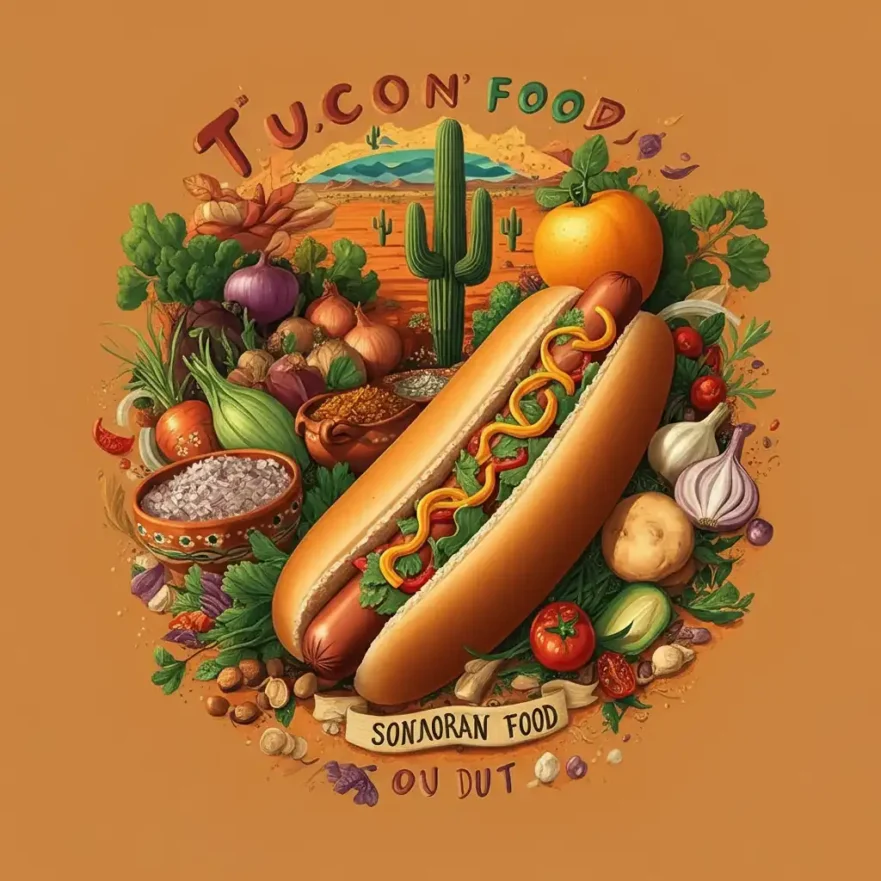Tucson, Arizona stands as one of America’s most distinctive culinary destinations, where ancient indigenous traditions blend seamlessly with Spanish colonial influences and modern innovation. This desert city has earned recognition as a UNESCO City of Gastronomy, making it the first American city to receive this prestigious designation. The honor reflects Tucson’s unique position at the crossroads of culinary cultures, where Native American heritage, Mexican traditions, and contemporary American cuisine create an extraordinary dining landscape.
The city’s food culture extends far beyond typical southwestern fare. Local chefs and home cooks alike draw inspiration from ingredients that have sustained communities for thousands of years, including desert plants like prickly pear cactus, mesquite, and cholla buds. These elements combine with Spanish-introduced ingredients and modern culinary techniques to create dishes found nowhere else in the world.
Tucson’s culinary identity reflects its geographic position in the Sonoran Desert, where the growing seasons and available ingredients have shaped eating habits for generations. The city’s proximity to Mexico ensures authentic flavors and techniques remain central to its food culture, while its position as a modern American city brings innovation and creativity to traditional preparations.
Historical Influences Shaping Tucson’s Cuisine
Native American Heritage and Indigenous Ingredients
The foundation of Tucson’s food culture rests on thousands of years of indigenous knowledge. The Tohono O’odham Nation, whose ancestral lands include the Tucson area, developed sophisticated agricultural practices and food preparation techniques that continue to influence local cuisine today. Traditional ingredients like tepary beans, amaranth, and various desert plants form the backbone of many contemporary dishes.
Indigenous cooking methods, including pit roasting and stone grinding, established flavor profiles that remain central to Tucson’s culinary identity. The use of desert plants like prickly pear cactus, mesquite pods, and cholla buds demonstrates the deep understanding of local ecosystems that indigenous peoples brought to the region’s food culture.
Spanish and Mexican Colonial Impacts
Spanish colonization introduced new ingredients, cooking techniques, and flavor combinations that fundamentally transformed the regional cuisine. Beef, pork, chicken, and dairy products became integral parts of local diets, while spices like cumin, oregano, and various chiles added complexity to traditional preparations.
Mexican influences grew stronger as the region changed hands politically, with Sonoran-style cooking becoming particularly important. This northern Mexican cuisine emphasized flour tortillas, beef, and specific cheese-making techniques that distinguish Tucson’s food from other southwestern cities.
Modern Influences Shaping Today’s Cuisine
Contemporary Tucson cuisine reflects waves of immigration and cultural exchange that have continued through the present day. Restaurant owners and chefs from various backgrounds have brought new techniques and ingredients while respecting traditional foundations. This evolution has created a dynamic food scene where innovation honors historical roots while embracing modern culinary trends.
Common Meals and Food Items
Sonoran Hot Dogs
The Sonoran hot dog represents one of Tucson’s most iconic culinary innovations. This distinctive preparation wraps an all-beef hot dog in bacon, then tops it with pinto beans, onions, tomatoes, mayonnaise, mustard, and jalapeño salsa. The combination is served on a soft bolillo roll, creating a substantial meal that satisfies both hunger and flavor cravings.
The dish’s popularity extends beyond mere sustenance to cultural significance. Street vendors throughout Tucson have elevated the Sonoran hot dog to an art form, with each vendor adding personal touches to the basic recipe. The preparation method, involving cooking the bacon-wrapped hot dog on a flat-top grill until the bacon achieves perfect crispiness, requires skill and timing that vendors take pride in mastering.
Chimichangas
Tucson claims to be the birthplace of the chimichanga, a deep-fried burrito that has become synonymous with Arizona cuisine. The dish typically consists of a flour tortilla filled with meat, beans, and cheese, then deep-fried until golden and crispy. Traditional preparations often include shredded beef or pork, though chicken and vegetarian versions have gained popularity.
Regional variations within Tucson reflect different cultural influences and personal preferences. Some restaurants serve chimichangas with red or green chile sauce, while others offer them with sour cream, guacamole, and lettuce. The size and preparation methods vary significantly, from small appetizer versions to massive entrees that challenge even hearty appetites.
Cactus Fries
Nopales, or prickly pear cactus pads, appear on Tucson menus in various forms, with cactus fries being particularly popular among visitors and locals alike. The preparation involves removing the spines and outer skin from young cactus pads, then cutting them into strips and battering them before frying. The result is a unique side dish with a slightly tart flavor and crispy exterior.
The taste of properly prepared nopales surprises many first-time diners. The cactus has a mild, slightly lemony flavor with a texture that falls between green beans and okra. When prepared as fries, the batter provides textural contrast while allowing the cactus’s natural flavor to shine through.
Red and Green Chile
Chile peppers hold central importance in Tucson cuisine, with red and green varieties appearing in countless dishes. The question “red or green?” frequently greets diners at local restaurants, reflecting the significance of chile choice in meal enjoyment. Each variety offers different heat levels and flavor profiles, from mild and sweet to intensely spicy.
Green chiles are typically harvested earlier and offer bright, fresh flavors with varying heat levels. Red chiles are fully mature versions that provide deeper, more complex flavors often accompanied by significant heat. Many Tucson restaurants prepare both varieties fresh daily, roasting them to enhance their natural flavors before incorporating them into sauces, stews, and main dishes.
Five Popular Restaurants
El Charro Café
El Charro Café holds the distinction of being America’s oldest Mexican restaurant in continuous operation by the same family. Founded in 1922, this establishment has become a Tucson institution, serving traditional Sonoran-style cuisine in a historic downtown location. The restaurant’s commitment to authentic preparation methods and family recipes has earned it recognition far beyond Arizona’s borders.
The restaurant’s signature dish, carne seca, demonstrates traditional food preservation techniques adapted for modern palates. The beef is sun-dried on the restaurant’s rooftop, then prepared in various ways including machaca and flautas. Customers frequently praise the restaurant’s consistent quality and authentic flavors, with many considering it an essential Tucson dining experience.
Tito & Pep
Tito & Pep represents Tucson’s modern culinary evolution, offering innovative interpretations of regional ingredients and techniques. The restaurant’s approach combines traditional Sonoran elements with contemporary cooking methods, creating dishes that honor local food culture while appealing to modern palates. The menu changes regularly to reflect seasonal ingredients and chef creativity.
The restaurant’s wood-fired cooking methods add distinctive flavors to both meat and vegetable dishes. Popular items include wood-fired vegetables prepared with local ingredients and meats cooked over mesquite, which imparts the distinctive smoky flavor associated with desert cuisine. The restaurant’s commitment to local sourcing ensures freshness while supporting regional food producers.
Seis Kitchen
Seis Kitchen showcases regional Mexican flavors through carefully crafted dishes that highlight traditional ingredients and preparation methods. The restaurant’s approach emphasizes authenticity while presenting food in ways that appeal to diverse palates. Menu items reflect various Mexican regional cuisines, with particular attention to Sonoran specialties.
Popular dishes include traditional moles prepared with complex spice blends and locally sourced ingredients. The restaurant’s commitment to traditional preparation methods ensures authentic flavors while modern presentation techniques create visually appealing dishes. Customer reviews frequently mention the restaurant’s ability to balance traditional flavors with contemporary dining expectations.
Penca Restaurante
Penca Restaurante brings Oaxacan-inspired cuisine to Tucson, offering diners the opportunity to experience the rich culinary traditions of southern Mexico. The restaurant’s approach emphasizes traditional ingredients and preparation methods while creating an atmosphere that celebrates Mexican culture and hospitality. The menu reflects deep knowledge of Oaxacan cuisine and commitment to authentic flavors.
The restaurant regularly hosts special events that showcase different aspects of Mexican culture, from traditional music performances to educational dinners featuring specific regional cuisines. These events create community connections while expanding diners’ understanding of Mexican food culture. The restaurant’s mole preparations receive particular acclaim for their complexity and authentic preparation methods.
The Monica
The Monica represents Tucson’s contemporary culinary scene, offering modern American cuisine influenced by local Sonoran ingredients and techniques. The restaurant’s approach demonstrates how traditional desert ingredients can be incorporated into contemporary cooking styles, creating dishes that reflect place while appealing to diverse tastes.
The restaurant’s menu changes seasonally to reflect ingredient availability and chef creativity. Dishes frequently feature local produce and proteins prepared with modern techniques while honoring traditional flavors. The restaurant’s commitment to local sourcing ensures freshness while supporting regional food producers and maintaining connections to place.
Seasonal Cuisine and Local Ingredients
Tucson’s seasonal cuisine reflects the desert’s unique growing patterns and harvest cycles. Winter months bring cooler temperatures that support cultivation of greens, citrus fruits, and various vegetables that cannot survive the intense summer heat. Spring offers brief but productive harvests of desert plants, including prickly pear cactus fruits and cholla buds.
Summer cooking adapts to extreme heat through preparation methods that minimize kitchen heat generation and emphasize cooling foods. Traditional preparations include fresh salsas, cold soups, and grilled foods that can be prepared outdoors. Fall brings harvest seasons for various crops, including chiles that are roasted and preserved for year-round use.
The seasonal approach to cooking ensures that Tucson cuisine remains connected to natural cycles and environmental conditions. This connection strengthens the relationship between food and place while ensuring that diners experience ingredients at their peak quality and flavor.
Embracing Tucson’s Culinary Heritage
Tucson’s food culture represents a remarkable synthesis of indigenous wisdom, colonial influences, and modern innovation. The city’s designation as a UNESCO City of Gastronomy reflects not just the quality of its cuisine, but the deep cultural connections that food represents in this desert community. From street vendors serving Sonoran hot dogs to upscale restaurants reimagining traditional ingredients, Tucson offers culinary experiences that satisfy diverse tastes while honoring cultural heritage.
The restaurants highlighted here represent just a fraction of Tucson’s dining opportunities, each contributing to the city’s reputation as a culinary destination. Whether seeking traditional preparations that have remained unchanged for generations or innovative interpretations that push culinary boundaries, visitors and residents alike find options that celebrate the unique character of this desert city.
Exploring Tucson’s food culture provides insight into the complex cultural history that has shaped this region. Each dish tells a story of adaptation, innovation, and cultural exchange that continues to evolve while honoring the past. The city’s culinary landscape invites exploration and discovery, offering rewards for those willing to venture beyond familiar territory and embrace the flavors that make Tucson truly distinctive.
Works Cited
- UNESCO Creative Cities Network. “Tucson, United States of America.” https://en.unesco.org/creative-cities/tucson
- Visit Tucson. “Culinary Culture.” https://www.visittucson.org/eat-drink/culinary-culture
- El Charro Café. “History.” https://www.elcharrocafe.com/history
- Tito & Pep. “About Us.” https://www.titoandpep.com/about
- Seis Kitchen. “Our Story.” https://www.seiskitchen.com/our-story
- Penca Restaurante. “About Penca.” https://www.pencarestaurante.com/about
- The Monica. “Our Philosophy.” https://www.themonicatucson.com/philosophy
- Arizona Daily Star. “Tucson’s Food Scene.” https://tucson.com/entertainment/dining/restaurants
- Tucson Foodie. “Local Ingredients Guide.” https://tucsonfoodie.com/local-ingredients
- Desert Museum. “Sonoran Desert Plants and Food.” https://www.desertmuseum.org/programs/tap_ethnobotany.php

